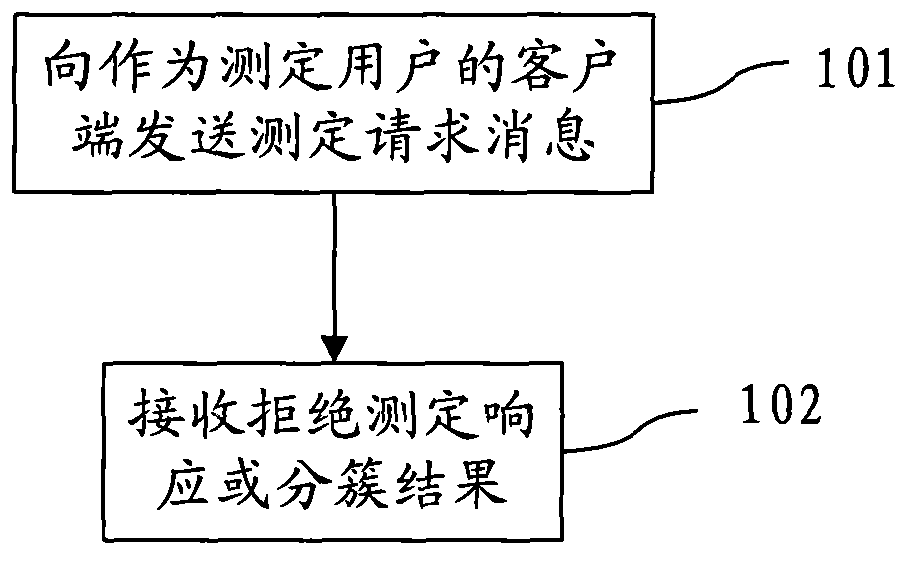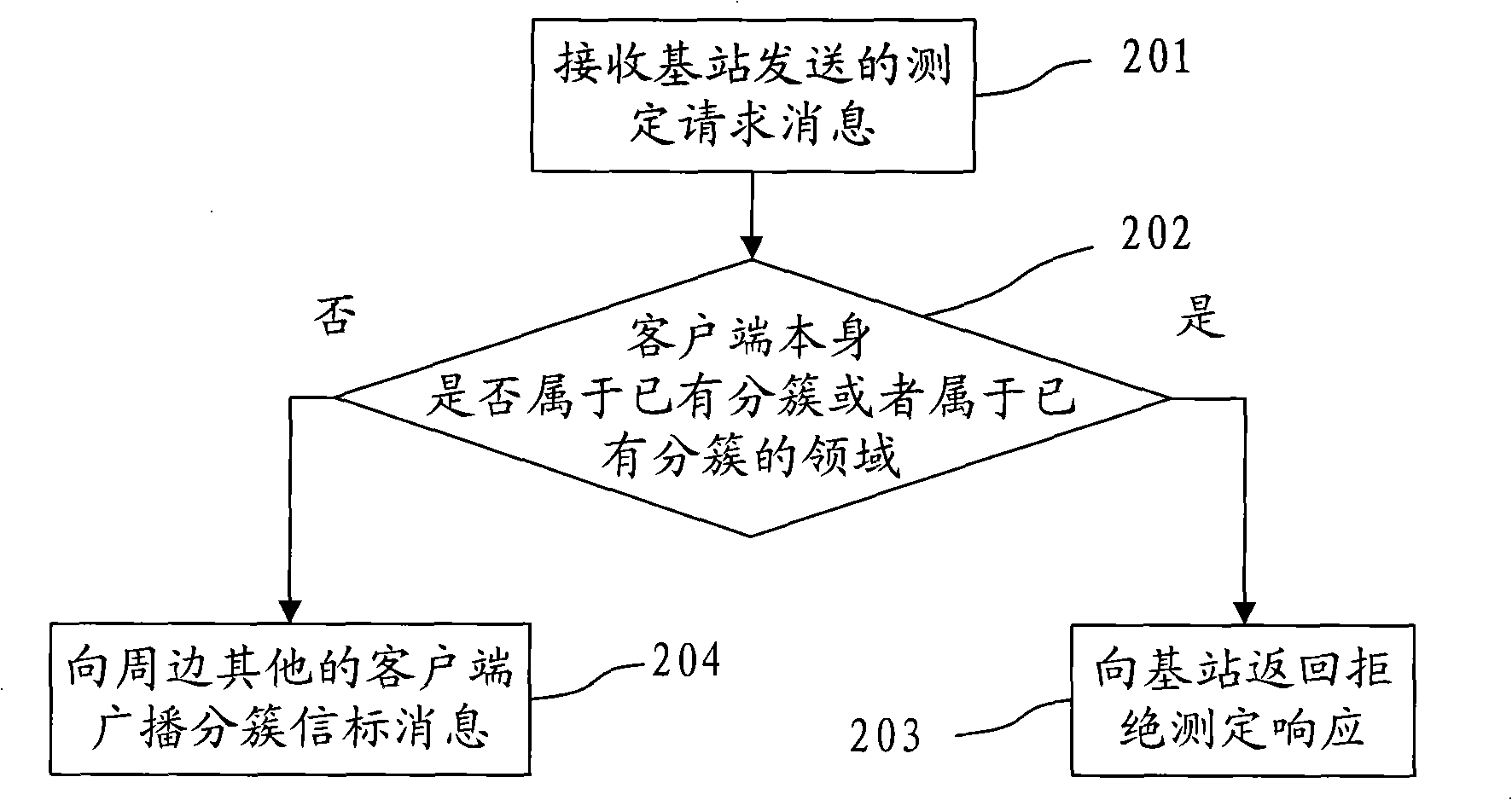Clustering method, equipment and system for cognitive radio system
A cognitive radio and clustering technology, which is applied in wireless communication, transmission systems, electrical components, etc., can solve the problems of far distance between clients and inability to divide client space into clusters, etc.
- Summary
- Abstract
- Description
- Claims
- Application Information
AI Technical Summary
Problems solved by technology
Method used
Image
Examples
Embodiment 1
[0046] This embodiment provides a clustering method of a cognitive radio system performed by a base station, such as figure 1 As shown, the method includes the following steps:
[0047] 101. The base station sends a measurement request message to a client as a measurement user, and the client as a measurement user is a cluster center, that is, a cluster head.
[0048] 102. After the corresponding processing is performed by the cluster head and other clients, the processing result is returned to the base station. In this embodiment, the base station may receive a response to reject the measurement returned by the client as the measurement user, or may receive a response not to be measured. The clustering result returned by the client of the user, the clustering result indicates that the corresponding client belongs to the same cluster as the client of the measurement user or indicates that the corresponding client belongs to the same cluster as the client of the measurement use...
Embodiment 2
[0070] In this embodiment, a clustering method of a cognitive radio system, such as Figure 8 As shown, the method includes the following steps:
[0071] 801. The base station sends a measurement request message to a client as a measurement user, and the client as a measurement user is a cluster center, that is, a cluster head.
[0072] In this embodiment, the client serving as the measurement user may be a client randomly selected by the base station, but it must be satisfied that the selected client does not belong to the existing cluster or the domain of the existing cluster.
[0073] As another possible implementation solution, the client serving as the measurement user in this embodiment may also be a pre-assigned client, so that the base station only needs to sequentially select from all assigned clients.
[0074] 802. After the cluster head and other clients perform corresponding processing, the cluster head or other clients return the processing result to the base sta...
Embodiment 3
[0111] This embodiment specifically describes the process of the entire clustering method with reference to the accompanying drawings. This embodiment is mainly applied to a cognitive radio system. The system includes a base station and clients, and the base station selects at least one client from all clients as a measurement user. Such as Figure 14 As shown, the specific clustering process is as follows:
[0112] 1401. The base station sends a measurement request message to a client as a measurement user. The client as a measurement user is a cluster center, that is, a cluster head.
[0113] 1402. After receiving the measurement request message sent by the base station, the client as the measurement user determines whether the client itself belongs to an existing cluster or belongs to the field of an existing cluster; if the client itself belongs to an existing cluster or belongs to If there is already a clustered domain, execute step 1403; if the client itself does not be...
PUM
 Login to View More
Login to View More Abstract
Description
Claims
Application Information
 Login to View More
Login to View More - R&D
- Intellectual Property
- Life Sciences
- Materials
- Tech Scout
- Unparalleled Data Quality
- Higher Quality Content
- 60% Fewer Hallucinations
Browse by: Latest US Patents, China's latest patents, Technical Efficacy Thesaurus, Application Domain, Technology Topic, Popular Technical Reports.
© 2025 PatSnap. All rights reserved.Legal|Privacy policy|Modern Slavery Act Transparency Statement|Sitemap|About US| Contact US: help@patsnap.com



